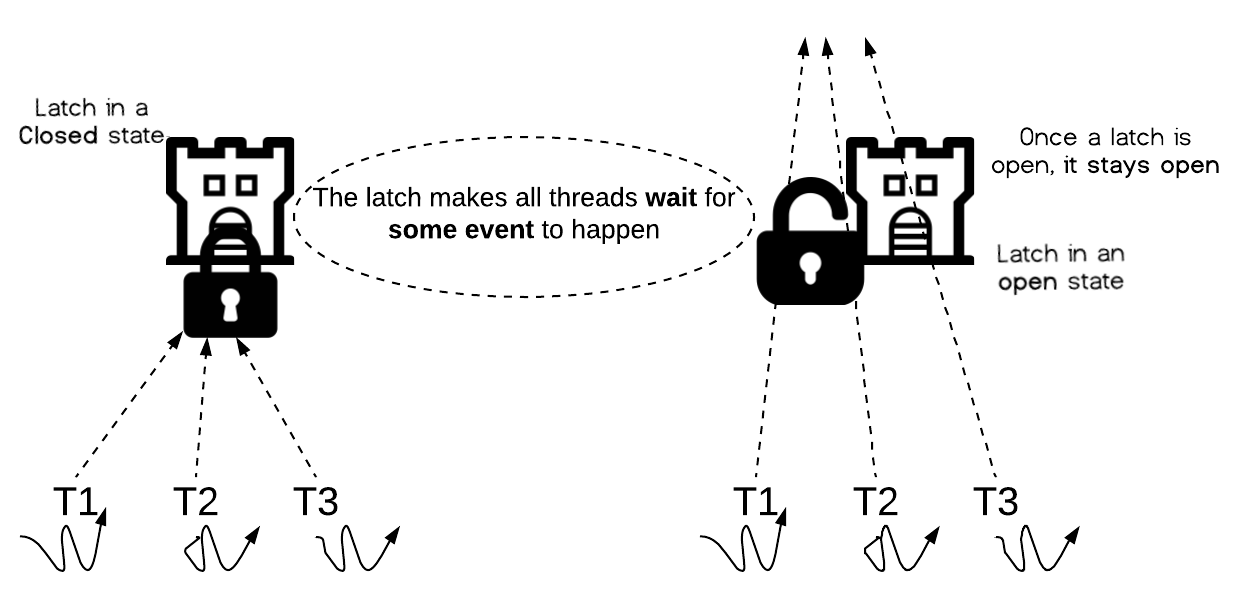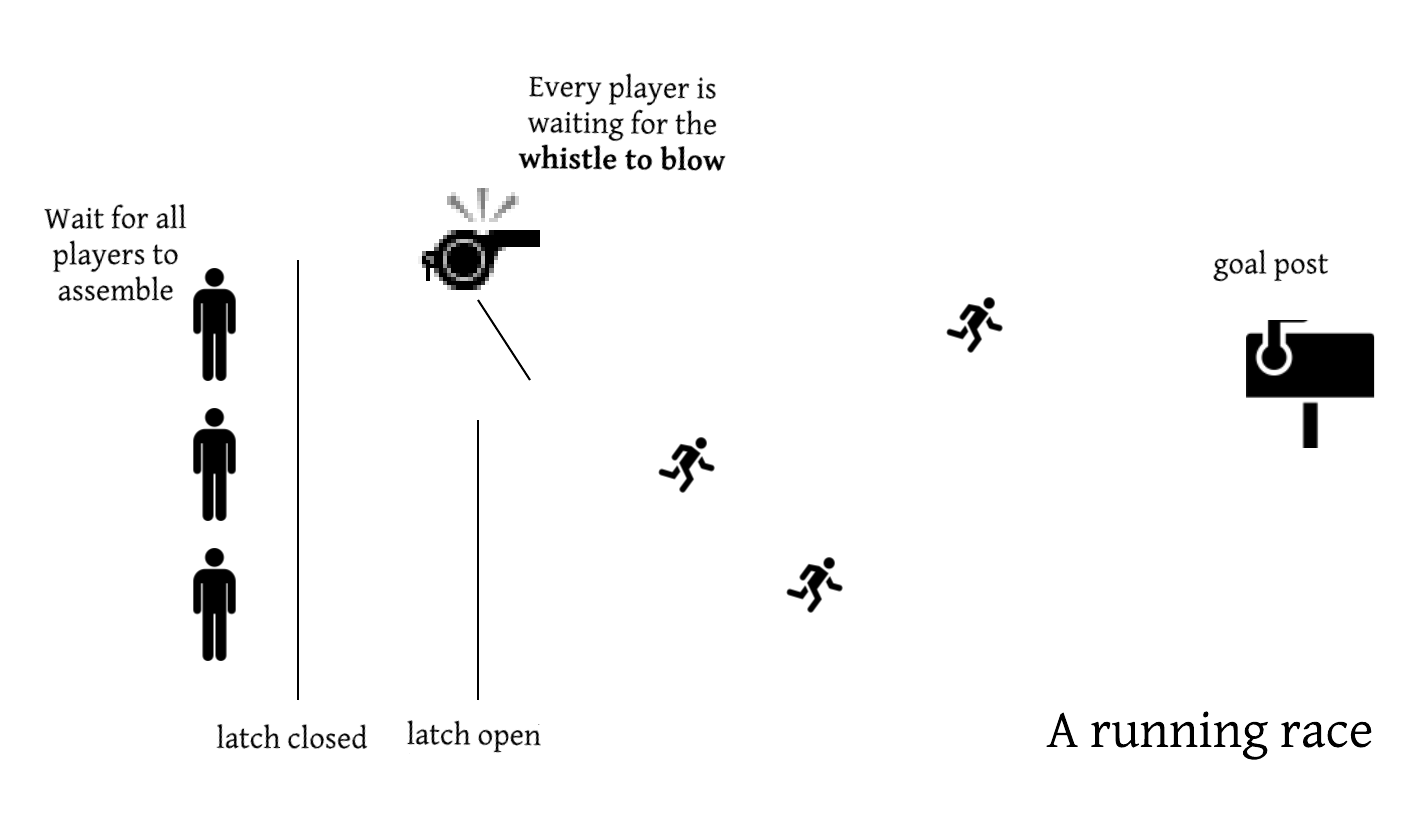A latch is yet another synchronizer. It acts as a gate—threads wait for the gate to open; once the gate— that is—the latch opens, all threads enter it:

Why do we need latches? A latch is used to ensure that, unless some essential, precursor activity has happened, other activities wait for it. Let's look at a real-life example:

The preceding diagram shows how running a race happens on a nice evening. All the players need to assemble at the starting point and wait for the whistle to blow. Once the whistle goes, the players start ...

